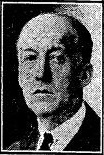Top Qs
Timeline
Chat
Perspective
Stirling Burghs (UK Parliament constituency)
Parliamentary constituency in the United Kingdom, 1801–1918 From Wikipedia, the free encyclopedia
Remove ads
Stirling Burghs was a district of burghs constituency of the House of Commons of the Parliament of the United Kingdom from 1708 to 1918.
Remove ads
Creation
The British parliamentary constituency was created in 1708 following the Acts of Union, 1707 and replaced the former Parliament of Scotland burgh constituencies of Stirling, Culross, Dunfermline, Inverkeithing and Queensferry
Boundaries
The constituency comprised the burghs of Stirling in Stirlingshire, Dunfermline, and Inverkeithing in Fife, Queensferry, in Linlithgowshire (West Lothian), and Culross, which was an exclave of Perthshire, transferring to Fife in 1889. By 1832, the burgh of Queensferry had become the burgh of South Queensferry.
History
The constituency elected one Member of Parliament (MP) by the first past the post system until the seat was abolished for the 1918 general election.[1] [2] [3] [4] [5]
In 1918, Stirling became part of Stirling and Falkirk Burghs and Dunfermline became part of Dunfermline Burghs, with the other burghs being represented as part of their respective counties.
Members of Parliament
Remove ads
Election results 1708-1885
Summarize
Perspective
Elections in the 1830s
Primrose was appointed as a Civil Lord of the Admiralty, requiring a by-election.
Elections in the 1840s
Elections in the 1850s
Elections in the 1860s
Oliphant resigned, causing a by-election.
Elections in the 1870s
Elections in the 1880s
Campbell-Bannerman was appointed Chief Secretary to the Lord Lieutenant of Ireland, requiring a by-election.
Remove ads
Election results 1885-1918
Summarize
Perspective
| Decades: |
Elections in the 1880s
A by-election was called after Campbell-Bannerman accepted office as Secretary of State for War as at that time Cabinet Ministers were required on appointment to submit themselves for re-election.[25]

Elections in the 1890s
Campbell-Bannerman was appointed Secretary of State for War requiring a by-election.[27]
Elections in the 1900s


Elections in the 1910s
Remove ads
See also
- Black Bond
- Stirling (UK Parliament constituency) (created 1983)
References
Sources
Wikiwand - on
Seamless Wikipedia browsing. On steroids.
Remove ads